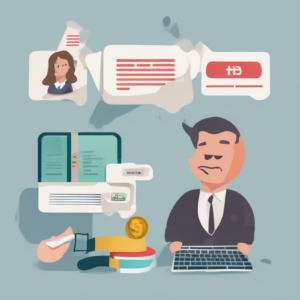Navigating the Maze: A Comprehensive Guide to California Debt Relief
California, a state known for its vibrant economy and diverse population, also faces significant challenges related to personal debt. High cost of living, unexpected medical expenses, job loss, and unforeseen circumstances can quickly overwhelm individuals and families, leading them to seek debt relief solutions. This comprehensive guide explores various avenues for debt relief in California, providing crucial information to help navigate the complex legal and financial landscape.
Understanding Your Debt
Before exploring debt relief options, it’s crucial to understand the types of debt you’re dealing with and their implications. Common types of debt include:
- Credit Card Debt: High-interest debt often with minimum payment requirements that can make it challenging to pay down the principal balance.
- Medical Debt: Often a significant source of financial strain, particularly for those without adequate health insurance.
- Student Loan Debt: Can accumulate over years and pose a significant long-term financial burden.
- Personal Loans: Loans taken out for various purposes, with varying interest rates and repayment terms.
- Payday Loans: Short-term, high-interest loans often associated with a cycle of debt.
Identifying the source and nature of your debt is the first step towards finding an appropriate solution. Gathering all relevant documentation, including statements and agreements, is essential for effective debt management and negotiations.
Exploring Debt Relief Options in California
California offers a variety of debt relief options, each with its own advantages, disadvantages, and eligibility requirements. Careful consideration is crucial to choosing the most suitable path.
1. Debt Consolidation
Debt consolidation involves combining multiple debts into a single loan with a potentially lower interest rate and simplified payment schedule. This can streamline payments and potentially save money on interest over time. However, it requires qualifying for a new loan, which may be challenging for individuals with poor credit.
2. Debt Management Plans (DMPs)
Offered by credit counseling agencies, DMPs involve negotiating with creditors to reduce interest rates and create a manageable monthly payment plan. This approach can prevent defaults and improve credit scores over time, although it often involves surrendering some control over your finances to the credit counseling agency.
- Benefits: Lower interest rates, simplified payments, improved credit score (over time).
- Drawbacks: Requires discipline, might not eliminate all debt, may involve fees from the credit counseling agency.
3. Debt Settlement
Debt settlement involves negotiating with creditors to pay a lump sum that’s less than the total amount owed. This strategy can significantly reduce the debt burden, but it typically results in a negative impact on credit scores and may involve fees from a debt settlement company.
- Benefits: Significantly reduced debt, potentially faster debt elimination.
- Drawbacks: Negative impact on credit score, potential tax implications, fees from debt settlement companies.
4. Bankruptcy
Bankruptcy is a legal process designed to help individuals and businesses eliminate or reorganize their debts. In California, there are two primary types of bankruptcy: Chapter 7 and Chapter 13.
- Chapter 7 Bankruptcy (Liquidation): Involves selling non-exempt assets to repay creditors. It’s often used when individuals have limited income and assets that are insufficient to repay their debts.
- Chapter 13 Bankruptcy (Reorganization): Involves creating a repayment plan over three to five years. It’s often used when individuals have a steady income and want to keep their assets.
Bankruptcy can provide a fresh financial start, but it has significant long-term consequences for credit scores and financial stability. It’s essential to seek legal counsel before filing for bankruptcy.
5. Wage Garnishment and Other Legal Actions
When debtors fail to make payments, creditors may pursue legal actions, such as wage garnishment, to recover their funds. Wage garnishment involves a portion of an individual’s wages being withheld to pay off debt. Understanding your rights and exploring legal options is crucial if faced with such actions.
Choosing the Right Debt Relief Strategy
The most suitable debt relief strategy depends on individual circumstances, including the type and amount of debt, income, assets, and credit score. Factors such as the willingness to negotiate with creditors, the ability to manage a repayment plan, and the long-term impact on creditworthiness should all be considered.
Factors to Consider:
- Amount of debt: The total amount of debt significantly influences the available options. Smaller debts may be manageable through debt consolidation or DMPs, while larger debts may necessitate bankruptcy or debt settlement.
- Income and assets: Income and asset levels determine eligibility for certain options, such as Chapter 7 or Chapter 13 bankruptcy. Individuals with higher incomes may be better suited for Chapter 13, while those with limited income and assets may be eligible for Chapter 7.
- Credit score: Credit score influences eligibility for debt consolidation loans and can impact the terms offered. Debt settlement and bankruptcy significantly impact credit scores.
- Creditors’ willingness to negotiate: Some creditors are more willing to negotiate than others. Debt settlement often requires negotiation, while DMPs involve working with a credit counseling agency to facilitate negotiations.
Seeking Professional Help
Navigating the complexities of California debt relief can be overwhelming. Seeking professional help from qualified professionals can significantly improve the chances of finding a successful solution.
Types of Professionals:
- Credit Counseling Agencies: Non-profit and for-profit credit counseling agencies can provide guidance on debt management, DMPs, and budgeting. It’s crucial to choose a reputable agency accredited by the National Foundation for Credit Counseling (NFCC).
- Debt Settlement Companies: Debt settlement companies negotiate with creditors on behalf of individuals to reduce the amount of debt owed. It’s essential to choose a reputable company with a proven track record and to carefully review all contracts and fees.
- Bankruptcy Attorneys: Bankruptcy attorneys specialize in guiding individuals through the bankruptcy process. They can advise on the most appropriate type of bankruptcy and assist with the filing process.
- Financial Advisors: Financial advisors can provide comprehensive financial planning and guidance, including debt management strategies.
Before engaging any professional, carefully research their qualifications, experience, fees, and reputation. Reading reviews and seeking referrals can help identify reputable and trustworthy professionals.
Avoiding Debt Relief Scams
Unfortunately, the debt relief industry is susceptible to scams. Beware of companies that promise unrealistic results, demand upfront fees, or pressure you into making quick decisions. Legitimate debt relief professionals will provide transparent information about their services, fees, and the potential outcomes.
Red Flags:
- Promises of quick and easy solutions: Debt relief takes time and effort. Avoid companies that guarantee unrealistic results.
- High upfront fees: Legitimate professionals typically don’t charge high upfront fees. Be wary of companies demanding significant upfront payments.
- High-pressure sales tactics: Legitimate professionals will provide you with time to consider your options without pressure.
- Lack of transparency: Reputable companies will provide clear and concise information about their services, fees, and the potential outcomes.
- Unlicensed or unregistered companies: Ensure the company is properly licensed and registered to operate in California.
By carefully considering the information presented in this guide and seeking professional assistance when needed, Californians can effectively navigate the complex landscape of debt relief and work towards a more secure financial future.





